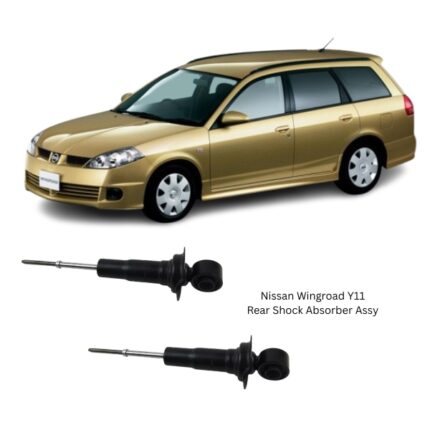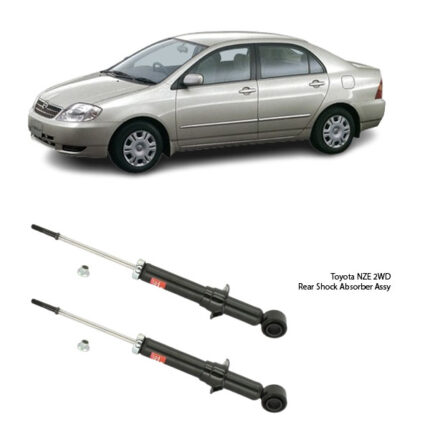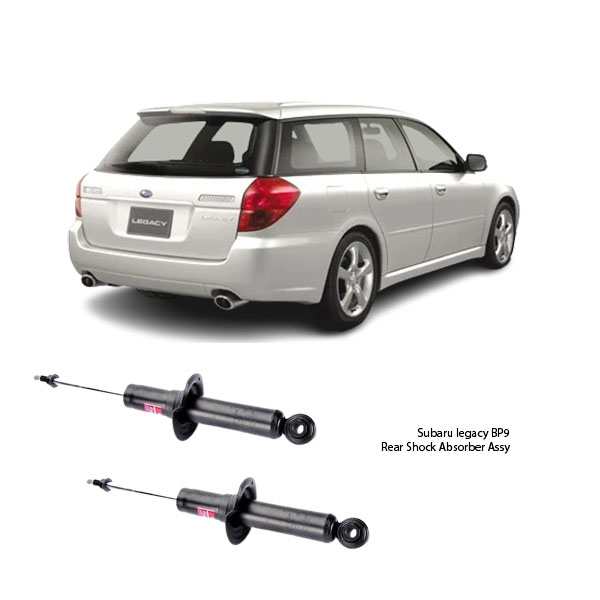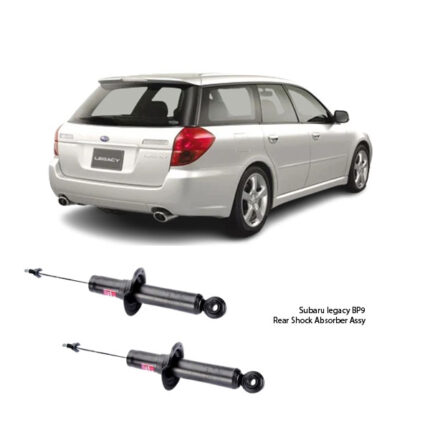Get Subaru Legacy BP9 Rear Shock Absorber Assy 341354 in Kenya
The Rear Shock Absorber Assembly is a critical component of a vehicle’s suspension system. While it often operates behind the scenes, it plays a crucial role in absorbing impact, ensuring stability, and enhancing ride comfort. Installed on the rear axle, this part is responsible for damping vibrations and motion caused by uneven road surfaces, potholes, sudden acceleration, or heavy braking. Without it, the rear end of the vehicle would bounce uncontrollably, making the ride uncomfortable and unsafe.
Let’s explore what the rear shock absorber assembly is, how it works, the advantages of a good one, symptoms of failure, and how to replace it.
What Is a Rear Shock Absorber Assembly?
A rear shock absorber assembly is a hydraulic or gas-charged component located at the back of the vehicle, connecting the axle or suspension arm to the body or frame. It works in conjunction with coil or leaf springs to control the motion of the suspension. Its job is not to hold the vehicle up—that’s the spring’s job—but rather to control and dampen the movement of the spring.
In some vehicles, especially SUVs or trucks, the assembly may also include an integrated spring (in coilover format), but in most passenger vehicles, the rear shock is separate from the spring.
How It Works
When a vehicle goes over a bump or dip, the rear wheels move upward, compressing the suspension. The shock absorber slows down this motion by forcing hydraulic oil (or gas) through small internal valves and passages, converting the kinetic energy into heat. As the spring rebounds, the shock again dampens this movement to ensure the vehicle doesn’t bounce excessively.
This damping effect maintains consistent contact between the rear tires and the road surface, improving grip, steering response, and safety.
Types of Rear Shock Absorbers
There are several types of shock absorbers used in rear suspension systems:
-
Twin-Tube Shocks – Consist of an inner and outer tube. Common and affordable for standard vehicles.
-
Mono-Tube Shocks – Feature a single tube with better heat dissipation, ideal for performance or heavy-duty use.
-
Gas-Charged Shocks – Use nitrogen gas to reduce foaming and enhance performance.
-
Coilover Shocks – Combine spring and shock absorber into one unit. Often used in sports cars and off-road setups.
-
Electronic Adaptive Shocks – Adjust damping automatically based on road conditions and driving style (mostly in modern luxury or performance cars).
Benefits of a Good Rear Shock Absorber Assembly
A well-functioning rear shock absorber offers several benefits, both in everyday driving and extreme conditions:
-
Improved Ride Comfort: It smooths out bumps and road irregularities, especially for rear passengers.
-
Enhanced Stability: Prevents excessive swaying or bouncing, especially when cornering or carrying heavy loads.
-
Better Handling: Improves vehicle control, making the rear more predictable during acceleration and braking.
-
Extended Tire Life: Keeps tires in contact with the road, reducing irregular wear such as cupping or feathering.
-
Protection for Suspension Components: Reduces strain on bushings, arms, and springs by controlling suspension movement.
-
Reduced Braking Distance: With more stable tire-road contact, braking becomes quicker and more consistent.
-
Minimized Body Roll: Helps maintain the car’s level during cornering, making driving safer and more controlled.
Consequences of a Worn-Out Rear Shock Absorber
If the rear shock absorbers are worn or damaged, the entire ride and handling dynamics of the vehicle can be negatively affected. Common issues include:
-
Increased Bouncing: The vehicle continues to bounce after passing over bumps.
-
Rear-End Sway: Excessive body movement during lane changes or turns.
-
Nose-Dive or Squat: The vehicle squats at the rear when accelerating or dives at the front during braking.
-
Longer Braking Distances: Tires lose traction due to reduced damping control.
-
Premature Tire Wear: Scalloping or uneven tread due to poor road contact.
-
Suspension Noise: Clunking, rattling, or banging sounds from the rear suspension area.
-
Fluid Leaks: Oil stains on the shock body indicate a failure of internal seals.
When to Replace the Rear Shock Absorber Assembly
The lifespan of rear shocks varies depending on driving habits, road conditions, and load frequency. Generally, replacement is recommended every 80,000 to 100,000 kilometers. However, if the vehicle is often driven on rough roads, tows heavy loads, or carries multiple passengers frequently, shocks may need earlier replacement.
Signs it’s time to replace:
-
The vehicle feels unstable or floats at the rear
-
Noticeable bouncing after hitting bumps
-
Visible oil leakage on the shock body
-
Unusual tire wear patterns
-
Uncomfortable or noisy ride
Always replace both rear shocks at the same time to maintain balanced damping on both sides.
How to Replace the Rear Shock Absorber Assembly
While some experienced car owners may replace shocks themselves, it is generally recommended to have a professional mechanic perform the job, especially if the shock is part of a more complex suspension system.
Basic replacement steps include:
-
Raise the Vehicle – Use a jack and secure the vehicle on jack stands.
-
Remove the Rear Wheel – Provides access to the shock absorber.
-
Unbolt the Shock – Disconnect the upper and lower mounting bolts using proper tools.
-
Remove the Old Unit – Carefully pull it out and inspect surrounding components.
-
Install the New Shock – Align and secure it with new bolts or torque to spec.
-
Reinstall the Wheel – Lower the car and do a quick road test to verify performance.
Some shocks come preassembled with mounts and bushings; others may require separate installation of these components.
Rear Shock Absorber vs Rear Strut
While both shocks and struts serve a damping function, they are not the same:
-
Shock Absorbers control movement and do not support the vehicle’s weight.
-
Struts are structural and integrate multiple suspension parts including the spring, mount, and bearing. Some vehicles use rear struts, especially in compact cars and certain front-wheel-drive platforms.
Always verify the correct part type for your vehicle before ordering replacements.
Follow us on Facebook for more parts.





Reviews
Clear filtersThere are no reviews yet.